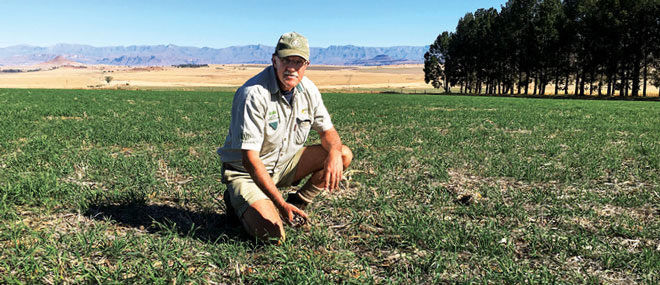No-Till Farmer
Get full access NOW to the most comprehensive, powerful and easy-to-use online resource for no-tillage practices. Just one good idea will pay for your subscription hundreds of times over.

MOTHER NATURE challenges all farmers, but for growers in the KwaZulu-Natal province of South Africa, the extreme variances in weather conditions most often necessitates a decision to no-till for many producers like Egon Zunckel.
No-till adoption started in 1984, in a year of extreme drought. “We were on the bones of our backsides and we just had to do something to conserve moisture,” Zunckel says.
On an open plateau — at an elevation of about 4,000 feet — and facing the country’s Drakensberg Mountains, Zunckel farms a combined 5,000 acres, 100% of which is no-tilled.
He does incorporate lime and nutrients per grid sampling results on a 4-year rotation. This is done with a chisel operation to leave residue on the surface, which is necessary because the farm is located in a high wind belt where surface-applied lime tends to be blown away.
In addition to the drought, a major shift toward conservation agriculture occurred in the country about 10-15 years ago, when fuel prices went to all-time highs, says Zunckel, who is active in South Africa’s no-till community.
He estimates that now about 40% of South Africa’s growers are practicing some form of conservation farming.
“You could smell the corn’s…